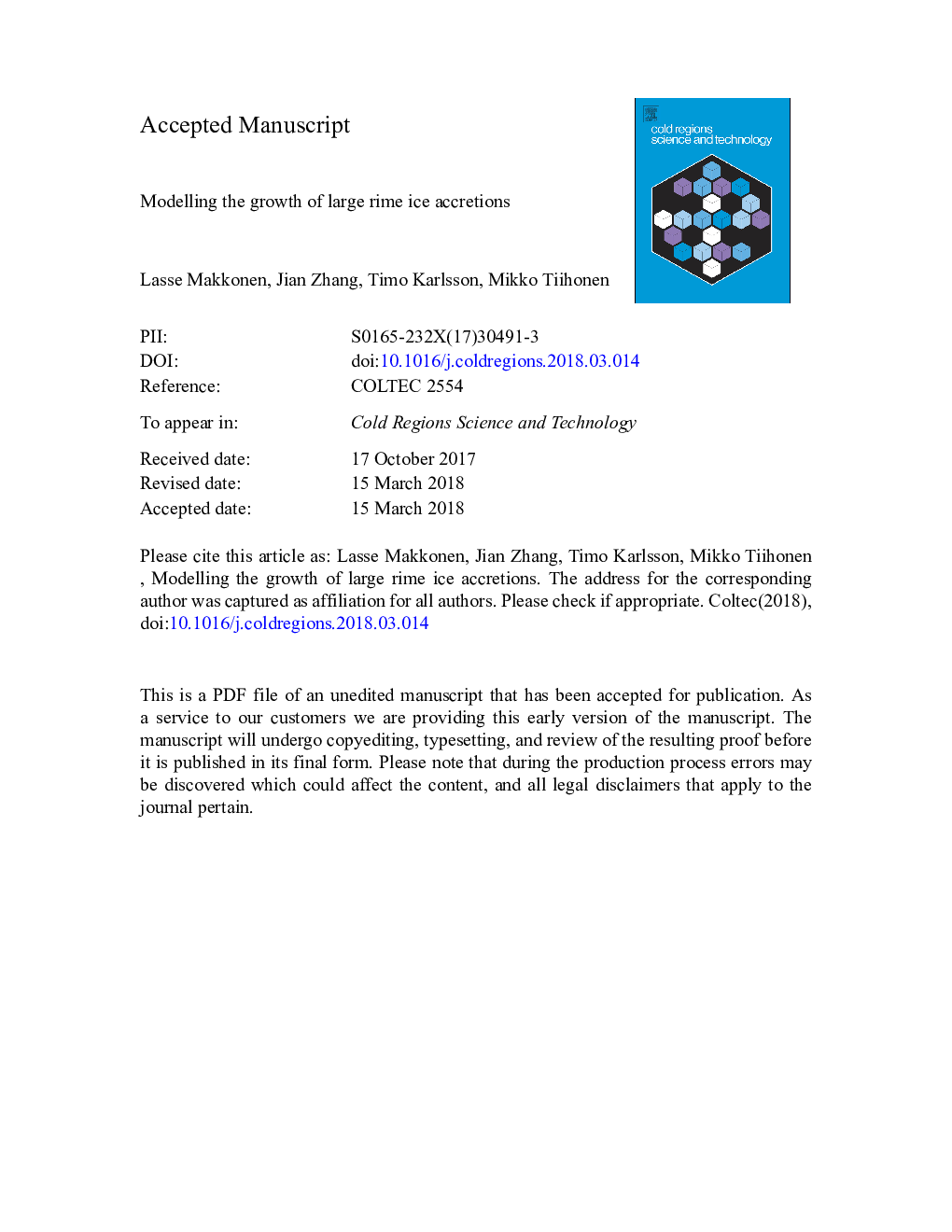| Article ID | Journal | Published Year | Pages | File Type |
|---|---|---|---|---|
| 8906469 | Cold Regions Science and Technology | 2018 | 21 Pages |
Abstract
The conventional theory of droplet collision with an object can be used only down to a collision efficiency of about 0.1. Therefore, no accurate modelling of in-cloud icing has been possible when droplets are small, wind speed is low, or the object is large. This has also put a limit on the size of an ice accretion on e.g. a power line cable up to which its growth can be simulated. We utilize results of icing wind tunnel experiments and fluid dynamics simulations to explain the differences between the experiments and the theory when the collision efficiency is small. We confirm that the history term in the droplet trajectory equations becomes relevant at small collision efficiencies. Including this term, and applying the integral over the size distribution instead of using the median volume diameter, shows that accurate modelling of icing at very small collision efficiencies is feasible. This makes it possible to estimate large rime ice loads relevant to structural design.
Related Topics
Physical Sciences and Engineering
Earth and Planetary Sciences
Earth and Planetary Sciences (General)
Authors
Lasse Makkonen, Jian Zhang, Timo Karlsson, Mikko Tiihonen,
